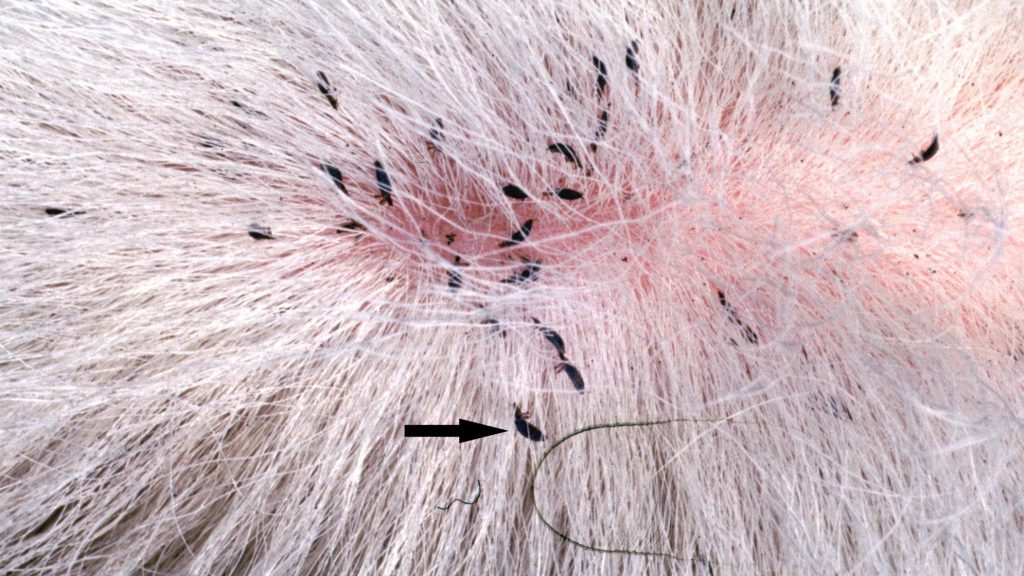Key Takeaways
-
Microscopic Pests: Dog ear mites are tiny, crab-like parasites that cause inflammation and irritation in the ear canals.
-
Common Symptoms: Look for scratching, head shaking, redness, coffee ground-like debris, and temporary hearing loss.
-
Highly Contagious: Ear mites spread easily via direct contact or shared bedding, toys, grooming tools, and public spaces.
-
Accurate Diagnosis: Veterinarians use otoscopes and microscopic debris analysis to confirm ear mite infestations.
-
Effective Treatments: Treatment includes antiparasitic ear drops or medications, ear cleaning, and follow-up care.
-
Preventive Measures: Clean ears regularly, isolate infected pets, wash bedding, and use vet-recommended preventives.
-
Common Misconceptions Clarified: Ear mites aren’t visible without magnification, affect any dog, and require veterinary treatment—not home remedies.
What Do Dog Ear Mites Look Like?
Dog ear mites are microscopic, measuring just 0.3 to 0.5 millimetres in length. They have a crab-like appearance with tiny legs and a whitish, translucent body. Dog ear mites are highly active and move around quickly inside the ear canal, further irritating your dog. The most noticeable sign of dog ear mites is the presence of dark, crumbly debris in your dog’s ear. This debris resembles coffee grounds and is composed of dried blood, earwax, and mite waste. Mite activity causes the inner ear to become red and inflamed as well.
Visit our Species, Control, and DIY Guide sections for additional resources on Mites and ways to tackle a mite infestation.
The most noticeable sign of dog ear mites is the presence of dark, crumbly debris in your dog’s ear. This debris resembles coffee grounds and is composed of dried blood, earwax, and mite waste. Mite activity causes the inner ear to become red and inflamed as well.
Visit our Species, Control, and DIY Guide sections for additional resources on Mites and ways to tackle a mite infestation.
Symptoms of Dog Ear Mites
When dogs have ear mites, they exhibit several behavioral and physical signs. Recognizing these symptoms early allows for timely treatment, preventing further complications. If your dog shows these symptoms, it may have ear mites:Signs of Ear Mite Infestation in Pets
-
 Excessive Ear Scratching: Pets frequently scratch their ears and rub their heads on surfaces due to irritation.
Excessive Ear Scratching: Pets frequently scratch their ears and rub their heads on surfaces due to irritation. -
 Frequent Head Shaking: Constant head shaking caused by discomfort and itching in the ears.
Frequent Head Shaking: Constant head shaking caused by discomfort and itching in the ears. -
 Dark Brown or Black Debris: Ear discharge resembling coffee grounds, a common sign of ear mites.
Dark Brown or Black Debris: Ear discharge resembling coffee grounds, a common sign of ear mites. -
 Redness and Inflammation: Swelling and irritation inside the ear canal due to mite activity.
Redness and Inflammation: Swelling and irritation inside the ear canal due to mite activity. -
 Scabs and Sores: Cuts or wounds from excessive scratching, leading to further complications.
Scabs and Sores: Cuts or wounds from excessive scratching, leading to further complications. -
 Temporary Hearing Loss: Debris buildup can block the ear canal, causing partial hearing loss.
Temporary Hearing Loss: Debris buildup can block the ear canal, causing partial hearing loss.
How Are Ear Mites Transmitted?
Dog ear mites are highly contagious. They can easily transfer from one animal to another, which is why it’s crucial to be aware of how transmission occurs. Here’s how dogs can become infested: The most common method of transmission is through close contact with another infected animal. Mites can move from one pet’s ear to another’s during play, grooming, or sleeping together. If your dog’s bedding, toys, or grooming tools are contaminated, mites can easily transfer to your pet’s ears. Areas frequented by infested animals, like dog parks, shelters, or pet boarding facilities, are common hotspots for mite transmission.Diagnosing Dog Ear Mites
Accurate diagnosis is essential for effective treatment. Dog ear mites can sometimes be mistaken for other ear problems like bacterial or yeast infections. Here’s how veterinarians identify an infestation: A vet will look for redness, discharge, and debris in your dog’s ear to check for mites. The dark, coffee-ground-like material is often a clear indication of ear mites. Vets use a device called an otoscope to look deeper into the ear canal. This tool allows them to spot the mites directly. The vet will collect a sample of the ear’s debris. This sample is examined under a microscope to confirm the presence of mites.

Not getting a solution?
Get your free pest control estimate today!Dog Ear Mites Treatment
Once a diagnosis is confirmed, treatment for dog ear mites can begin. Prompt treatment helps avoid severe health problems like infections or hearing loss.Effective Treatments for Ear Mites in Pets
-
Antiparasitic Ear Drops: These ear drops kill the mites and relieve itching and inflammation. Treatment must continue for the full duration prescribed by the vet to eliminate all mites.
-
Systemic Medications: For severe infestations, oral or injectable antiparasitic medications may be prescribed to target mites throughout the body.
-
Debris Removal: Cleaning the dog’s ears with a vet-approved solution removes debris and soothes the ear canal, an essential step before applying medication.
-
Treatment Duration: Ear mite treatment usually lasts 7-14 days. Even if symptoms improve, completing the full course is crucial to prevent resurgence.
-
Post-Treatment Checkup: A follow-up visit to the vet ensures all mites are gone and checks for any residual issues.
Preventing Ear Mites in Dogs
Prevention is key to keeping your dog’s ears healthy. Here’s how you can protect your pet from ear mites:- Regular Ear Cleaning
- Separate Infested Animals
- Wash Bedding and Toys
- Routine Examinations
- Use Preventive Medications
Myths and Facts About Dog Ear Mites
Misinformation about ear mites is common, which can delay treatment or prevention. Here are some common myths debunked:| Myth | Fact |
|---|---|
| Ear mites only infest dirty dogs. | Any dog can get ear mites through contact with infected animals. |
| Ear mites are visible to the naked eye. | They are microscopic and require magnification to be seen. |
| Home remedies are sufficient for treatment. | Vet-prescribed medications are the most effective. |
| Humans can’t get ear mites from dogs. | While rare, ear mites can transfer to humans. |
| Ear mites die off naturally. | Without treatment, mites can thrive and worsen the infestation. |





